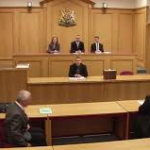A Deed of Assignment is a pivotal legal document, albeit one shrouded in a cloud of legal jargon for the average person. This article aims to demystify this term, shedding light on its significance, particularly in the context of transferring beneficial interest between parties, a scenario often encountered by property owners, notably between spouses for tax optimisation purposes in a buy-to-let situation.
A legal instrument
A Deed of Assignment is a legal instrument that facilitates the transfer of an individual’s beneficial interest in a property to another party. Commonly, this arrangement is used by couples, typically husband and wife, to navigate the complexities of tax liabilities on rental income, thereby optimising their financial obligations. You can find out more here.
Beneficial interest, in this context, refers to the benefits that an individual derives from the property, such as rental income or the right to reside there. Unlike legal ownership, which pertains to the formal, legal title of the property, beneficial interest concerns the practical advantages of ownership.
Nature of ownership
For properties held as joint tenancies-a common form of co-ownership where both parties own the entire property together-assigning beneficial interest necessitates a formal alteration in the nature of the ownership. This involves severing the joint tenancy to transition to a tenancy in common, another form of co-ownership where each party owns a specified share of the property.
This process requires the parties to register their new status as tenants in common with the Land Registry, marking a significant shift in how the property is owned and managed between them. For further details, consult an experienced solicitor, such as https://www.parachutelaw.co.uk/deed-of-assignment.
Why would property owners opt for such a transfer? The reasons can be manifold, but tax optimisation stands out as a primary motivator. By strategically assigning beneficial interest, owners can potentially lower their tax liability, as the income generated from the property can be distributed in a way that maximises tax efficiency. This is particularly beneficial for couples where one partner falls into a lower tax bracket, allowing the couple to maximise their rental income’s after-tax value.

While the Deed of Assignment might initially appear as a dense thicket of legal terminology, its practical applications are both significant and beneficial. By understanding this instrument, property owners can make informed decisions about how they hold and manage their property, ensuring that their assets work best for their financial situation.




















+ There are no comments
Add yours